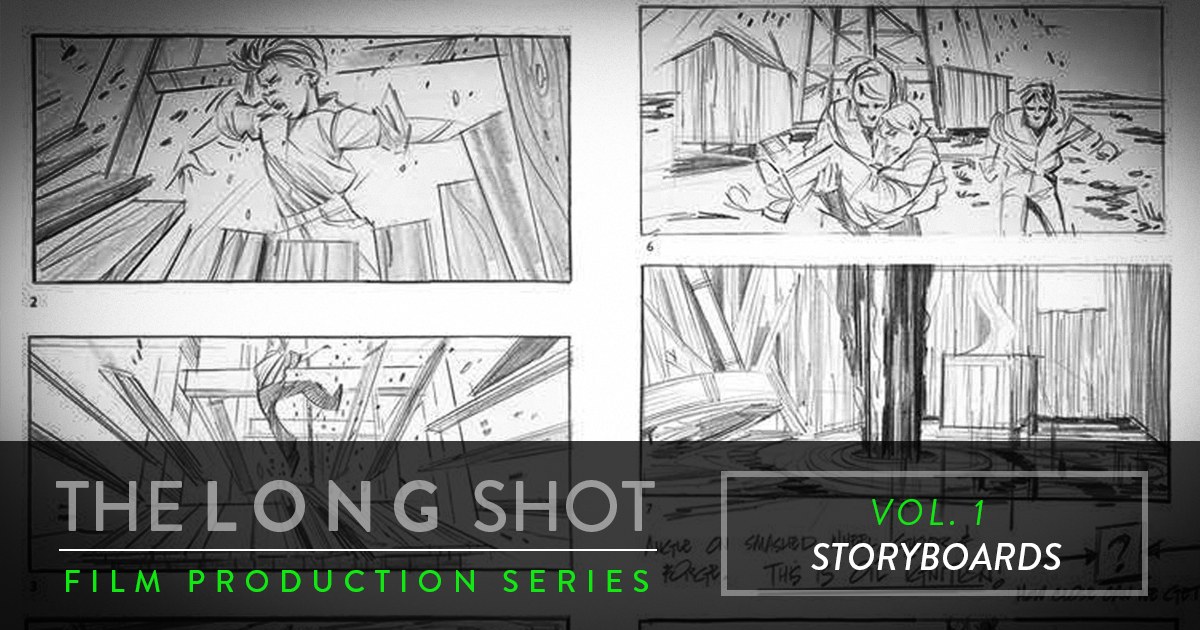
Rehearsals, storyboards, test shoots, location scouts, budgets; there’s a reason these are necessary benchmarks in professional productions; they save time and money before committing your crew & talent to the rigors of a film shoot. As an independent filmmaker, these are not just a checklist to work through, they are valuable tools to increase your production value and can transform your low budget passion project into a sleek, Hollywood-worthy production.
STORYBOARDING

One of the first steps I take upon completing a final draft of a screenplay is to storyboard. As a director, it is my job to communicate my vision of the screenplay to the director of photography, the production designer and the actors. The most important part of communication is what will be captured in the frame. Anything outside of the frame is superfluous.

Whatever choices the production designer makes will be determined by what the camera will capture. The number of camera setups and lighting approach will be determined by the set/location and where the actors are in the frame.
For example, my previous short film Food Cart, I had my extremely talented artist friend, Brooks Jarrett, storyboard scenes that required multiple setups, make-up effects and coordination. We could only afford a permit for one night of filming on a public street (that was all the budget would allow) so we did not have the luxury of shooting different angles for coverage.
We were working with a skeleton crew so I was directing, operating sound & acting as my own AD. I had to ensure we would capture all of the footage for the scene.

Here is the script. The scene is highlighted.

As you can see, there is very little dialogue and coordinated action with a vehicle and a body. I worked with Brooks to describe how I saw the different shots play out in my head. Now here is the storyboard.
The benefit in hiring a talented storyboard artist is he/she can help improve your story. I was worried that the audience may not realize that Rick was the character who was killed without cutting to a close-up of his face. When Rick is introduced at the beginning of the story, I wanted him to have something in his hands to mess with, so the actor would have some business and it would show his disregard for the people he interacts with. Brooks came up with the idea to give Rick a a Yo-Yo. Not only did the Yo-Yo work in the opening scene (it makes Rick even more obnoxious) but the reveal of Rick’s death allowed for us to be on Ali’s face when he picks up the Yo-Yo with blood on it, a little bit of dark humor, while also tipping the audience on who has been killed. Brooks helped make the scene more cinematic.
Sean Conley, the very talented DP, scribbled notes on the storyboard on which lenses would provide the proper framing to match the boards. Next we scouted the location and did a test shoot. Sean was able to draw diagrams on where to set up Key Lights and where to bring in fill and backlight. By placing the action far enough down the street, we could use the available light from a streetlight to bring up the ambient level on the scene as well as act as a dramatic backlight for our character. It allowed Sean to use motivated light sources to achieve a natural look. Using the storyboards, we did a test shoot so I could edit the pieces together and confirm we had all of the pieces necessary to tell the story.
Here is the test shoot.
We were pleased with the location. Sean and I also collaborated on the shot list, prioritizing the shots with the actors that took the most setup to the beginning of the shoot and pushing the cutaway shots of the emergency button and flashing car lights to the end so we could release the actors early. Sean felt confident with his lighting scheme. I moved ahead with filing a permit with the City of Portland for a month later.
So everything was smooth sailing, right? Ha. I have a saying I acquired from years of filming on location, “God hates filmmakers”. We scouted in April and by the time we were able to shoot the first week of May, the tree in front of our streetlight was overgrown and blocking out most of the light. It turned out to be one of the hottest days of the year so far and the industrial street in NW Portland near Montgomery Park, typically empty on a weeknight, was brimming with drunk passerby’s and even some party girls who tried to drive onto our closed set. They even demanded to be in our “music video”. We politely sent them on their way without much disruption, but all of these incidents reinforce how critical it is to do proper prep work before showing up on location to shoot.
Here is the final result:
The editor cut some of the shots to build tension and to heighten the mystery of who Ali hit with his car. However, the scene plays out almost identically to what was drawn on the storyboards.
Do you need to storyboard every shot of a film? Of course not. But you can maximize your money and efforts by storyboarding complex scenes.
Article was originally published at lucaslongacre.com




